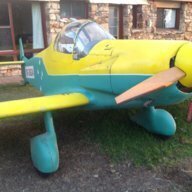Good morning Balázs, it’s 3am here and I cannot sleep.
A few more comments: according to Table 1 (below) your engine is a much later model than your friend’s. Yours would have the latest Flywheel bolt improvements, his does not, unless it has been upgraded. I presume he is aware that his flywheel attachement bolts need to be checked regularly.
As mentioned before, your propeller bolts don’t inspire confidence! Fixing that problem would be my first priority.
I see you have a wooden/composite prop. It’s probably more efficient than the original wooden Jabiru prop that I have. I don’t know the recommended mounting for your type, but for my old wooden prop, each bolt requires four pairs of belleville washers as shown below. I believe these allow a small, natural amount of expansion and contraction of the wood, without crushing the fibres.
Note the even bolt lengths and excess threads clear of the nylock nuts.
(When installing longer bolts, I wouldn’t fit a used nylock nut for a critical job like holding on the propeller- I’d fit new ones.)
You’ll notice I have to remove the spinner to inspect prop bolt tension. Your setup, with nuts visible behind the drive plate, might be better in that regard than the standard Jabiru props installation, as seen below:
Below is evidence of how hot my cylinder heads have been; I wouldn’t like it any darker:
One way to keep them cooler is to ensure all air that enters your ram air ducts has to go through the cooling fins. I see you have what appears to be a large leak here:





